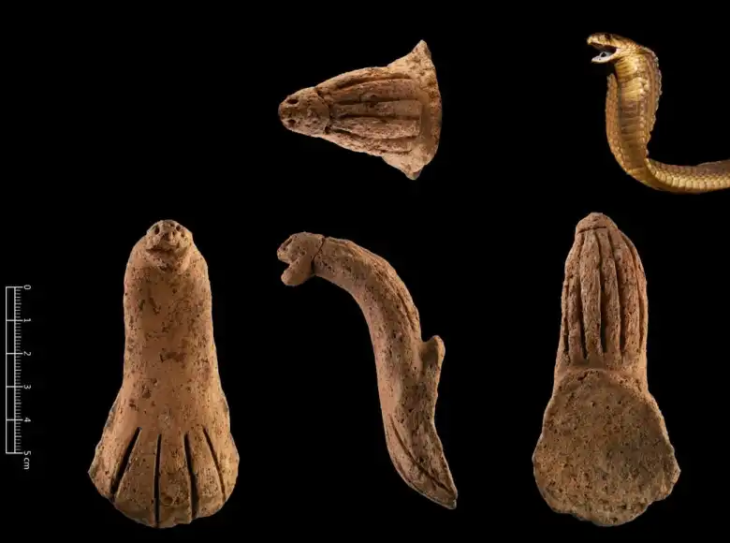Archaeologists in Taiwan have unearthed a remarkable artifact that sheds light on the beliefs and practices of the island’s inhabitants 4,000 years ago. National Tsing Hua University researchers discovered a well-preserved pottery handle shaped like a cobra, with its head raised and hood flared in a striking pose.
Unearthed at a sand dune site on the northwest coast, near Guanyin District in Taoyuan City, the artifact is believed to have been part of a larger vessel or ceremonial jar. The lifelike details, including the raised head, open mouth, and bulging folds on the neck, leave no doubt about the intended depiction – a powerful cobra.
The age of the artifact was determined using radiocarbon dating techniques, placing it firmly within the Neolithic period. This discovery was initially announced on a social media page dedicated to archaeological news, highlighting its significance for understanding the history of Taoyuan City.

Snakes hold a prominent place in mythology, religion, and literature across various cultures. Their ability to shed their skin has been interpreted as a symbol of rebirth, transformation, and the cyclical nature of life and death. The symbolism associated with snakes appears to be particularly strong in many East Asian societies, and this Taiwanese discovery resonates with these broader themes.
“This find is an important piece of the puzzle,” explains Professor Hung-Lin Chiu, an associate professor at Tsing Hua’s Institute of Anthropology. “The vivid depiction of the cobra suggests it may have been used for ritual purposes. Incorporating animal imagery into ceremonial objects was a common practice in ancient societies, reflecting their belief systems and understanding of the world.”
The excavation site where the cobra handle was found has yielded other significant discoveries, including a vast area dedicated to stone tool processing. Numerous stone flakes and cores were unearthed, providing valuable clues about the technological advancements and tool-making practices of these ancient Taiwanese communities.
This discovery adds another layer to our understanding of Taiwan’s prehistoric past. The lifelike cobra handle not only serves as a testament to the artistic skills of these early inhabitants, but also offers a window into their rich symbolism and the role it played in their rituals and belief systems. Future excavations at the site hold the promise of revealing even more about this fascinating chapter in human history.
